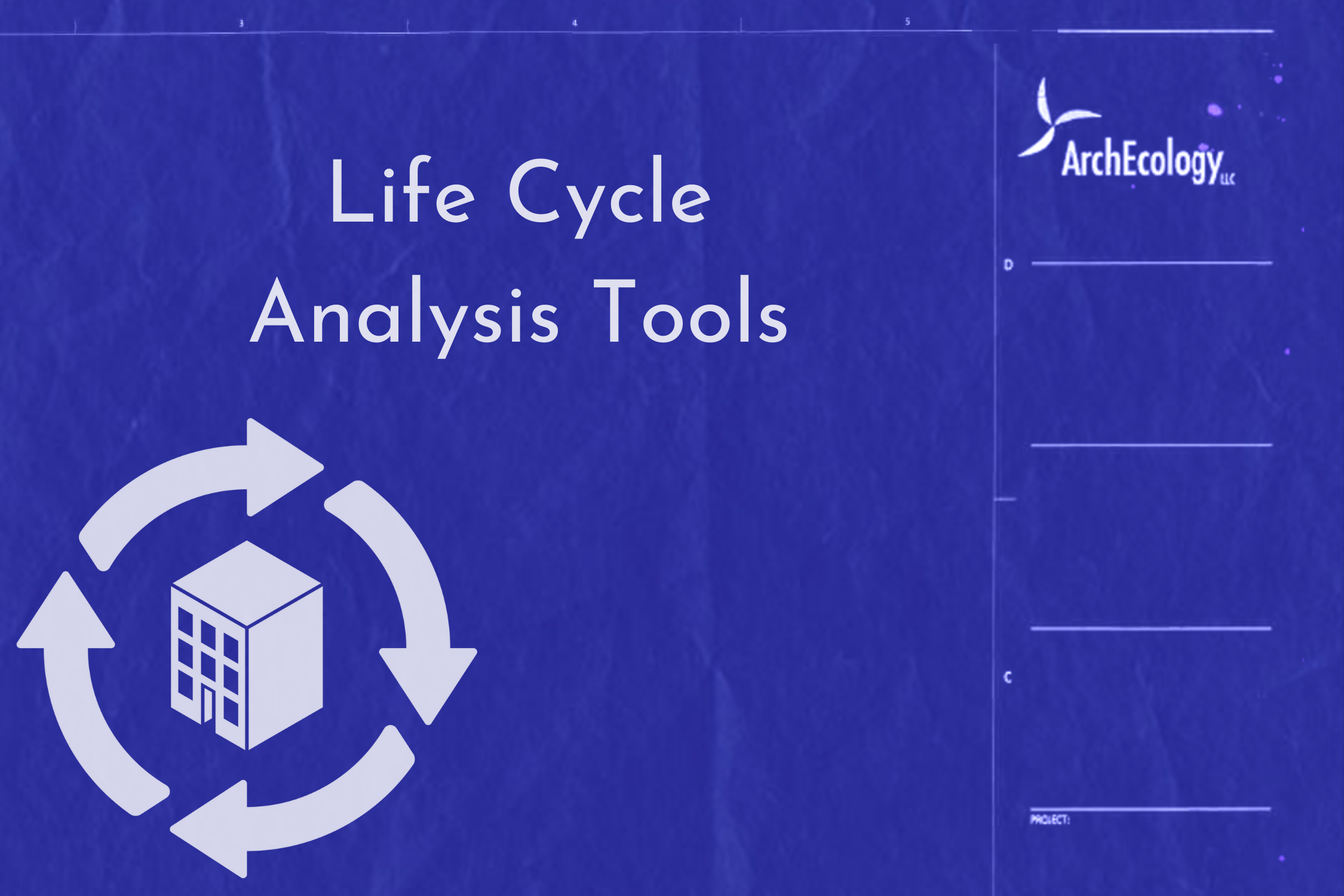LCA Software
What you need to know about the new life cycle analysis tools.
Whole Building Life Cycle Assessment is a comprehensive method for evaluating the environmental impact of a building from its initial construction through its entire life span, and can be used to comply with codes, standards and green building rating systems.
Life Cycle Analysis (LCA) encompasses raw material extraction, manufacturing, transportation (A1-A3), construction, operation, maintenance (B1-B5), and eventual demolition (C1-C4) or reuse (D). It examines factors such as energy consumption, resource usage, and emissions throughout the building's life cycle to evaluate their impact on six different environmental impact categories – global warming potential (carbon), acidification, eutrophication, ozone depletion in both the stratosphere and troposphere, and non-renewable resource depletion.
Several tools are available in the market for conducting a Life Cycle Assessment (LCA), and some commonly used ones are Athena Impact Estimator for Buildings, Tally and One Click LCA. So, what’s the right tool for you to evaluate building life-cycle impact? Unfortunately, there is no single right answer. The choice depends on several factors such as project complexity, budget, project type, data availability, and user preferences.
Let's take a deeper look at how these tools perform in consideration of each of these factors.
Early Design decisions – Athena has prebuilt building assemblies that can be customized, which is very helpful in making early design decisions when the architectural and structural assemblies aren’t yet detailed. An example scenario would be while doing a comparison between wood and steel trusses for the floor slab. The only information needed to conduct an assessment would be the floor span and width. Athena automatically and quickly considers all the quantities of additional accessory materials like nails, adhesives, etc. that are needed for the LCA. On the other hand, for assessing in Tally, at least a simple Revit model with design options is necessary to make the comparison. One Click LCA has a “carbon designer” tool available for an additional cost that allows the user to get a Bill of Materials without needing a design to perform carbon assessments. However, to get a detailed impact of other categories like acidification, eutrophication, etc., at least a rough idea of what materials will be used is needed.
Customization and flexibility – Athena’s customization options are limited to pre-built assemblies in the tool. It has few to no options for interior material finishes to conduct an LCA for an interior design project or an existing building renovation. Tally and One Click LCA allow the user to model these interior materials and create building assemblies that can accommodate different project needs. One Click LCA further allows the user to model the furniture and lets the project take credit for reusing the existing furniture systems.
Integration – Both Tally and One Click LCA can be integrated with a Revit model which allows the user to extract the material quantities directly from the BIM environment. The main difference between them is that Tally has an interface that is integrated with the Revit model itself, but One Click LCA imports this information to its cloud interface. As Tally allows you to work directly within the Revit file, it is often easier to make real-time design changes in the model directly. However, without a Revit model, it is not possible to conduct an LCA. But One Click LCA and Athena allow the user to manually input the bill of materials to perform an LCA.
User expertise — Working with Tally often requires at least a basic knowledge of Revit. However, an LCA could be performed with One Click LCA or Athena without any special modeling expertise.
Global Applicability — Tally and Athena’s applicability is more tailored to the users in regions of North America and might limit the assessment for projects outside the US. However, One Click LCA has a very robust EPD database that integrates data from nearly all the available EPD platforms globally.
Cost — Athena is the only free software tool that offers a comprehensive database and a user-friendly interface, making it widely used in North America. Both One Click LCA and Tally have associated license costs, potentially impacting smaller projects or organizations with budget constraints.
Creating a Baseline — Most certification programs require the creation of a baseline scenario to assess the percentage of impact reductions to reward points. Athena allows the user to create both the baseline and design models in the same file and generates a report showing the percentage reduction in impact categories. Tally requires the creation of a separate Revit model for the baseline, and the final reductions must be calculated in Excel with the results from both the models. This makes it difficult to know the outcome in real-time when modeling the baseline. One Click LCA does a good job in this part and is often easier to know the percentage impact reductions in real time. Even though both of these software do not automatically generate a summary report between the baseline and design scenarios, templates are available to edit and manually enter the results.
In conclusion, even though it is difficult to choose one tool that satisfies every criterion of the project, it is often necessary to weigh the main factors that are important for the project team to perform an LCA. Some things to consider would be the cost, time, and expertise at hand. It is helpful to test the tools available in the market and choose the one that best fulfills the project's needs.
Check out Athena, Tally, or One Click LCA or just reach out and let us know how we can help!

